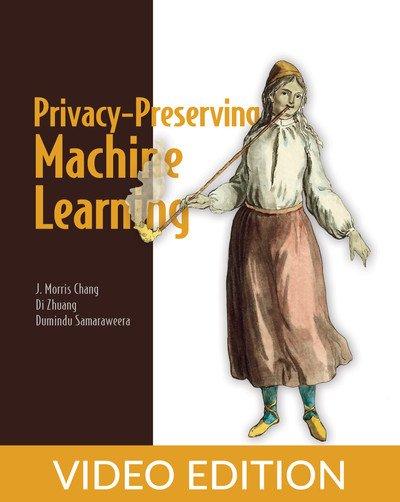English | MP4 | AVC 1280×720 | AAC 44KHz 2ch | 9h 37m | 1.15 GB
Keep sensitive user data safe and secure without sacrificing the performance and accuracy of your machine learning models.
In Privacy Preserving Machine Learning, you will learn
- Privacy considerations in machine learning
- Differential privacy techniques for machine learning
- Privacy-preserving synthetic data generation
- Privacy-enhancing technologies for data mining and database applications
- Compressive privacy for machine learning
Privacy Preserving Machine Learning is a comprehensive guide to avoiding data breaches in your machine learning projects. You’ll get to grips with modern privacy-enhancing techniques such as differential privacy, compressive privacy, and synthetic data generation. Based on years of DARPA-funded cybersecurity research, ML engineers of all skill levels will benefit from incorporating these privacy-preserving practices into their model development. By the time you’re done reading, you’ll be able to create machine learning systems that preserve user privacy without sacrificing data quality and model performance.
Machine learning applications need massive amounts of data. It’s up to you to keep the sensitive information in those data sets private and secure. Privacy preservation happens at every point in the ML process, from data collection and ingestion to model development and deployment. This practical book teaches you the skills you’ll need to secure your data pipelines end to end.
Privacy Preserving Machine Learning explores privacy preservation techniques through real-world use cases in facial recognition, cloud data storage, and more. You’ll learn about practical implementations you can deploy now, future privacy challenges, and how to adapt existing technologies to your needs. Your new skills build towards a complete security data platform project you’ll develop in the final chapter.
What’s Inside
- Differential and compressive privacy techniques
- Privacy for frequency or mean estimation, naive Bayes classifier, and deep learning
- Privacy-preserving synthetic data generation
- Enhanced privacy for data mining and database applications
Table of Contents
1 Part 1. Basics of privacy-preserving machine learning with differential privacy
2 Privacy considerations in machine learning
3 The threat of learning beyond the intended purpose
4 Threats and attacks for ML systems
5 Securing privacy while learning from data Privacy-preserving machine learning
6 How is this book structured
7 Summary
8 Differential privacy for machine learning
9 Mechanisms of differential privacy
10 Properties of differential privacy
11 Summary
12 Advanced concepts of differential privacy for machine learning
13 Differentially private supervised learning algorithms
14 Differentially private unsupervised learning algorithms
15 Case study Differentially private principal component analysis
16 Summary
17 Part 2. Local differential privacy and synthetic data generation
18 Local differential privacy for machine learning
19 The mechanisms of local differential privacy
20 Summary
21 Advanced LDP mechanisms for machine learning
22 Advanced LDP mechanisms
23 A case study implementing LDP naive Bayes classification
24 Summary
25 Privacy-preserving synthetic data generation
26 Assuring privacy via data anonymization
27 DP for privacy-preserving synthetic data generation
28 Case study on private synthetic data release via feature-level micro-aggregation
29 Summary
30 Part 3. Building privacy-assured machine learning applications
31 Privacy-preserving data mining techniques
32 Privacy protection in data processing and mining
33 Chapter 7.3 Protecting privacy by modifying the input
34 Protecting privacy when publishing data
35 Summary
36 Privacy-preserving data management and operations
37 Privacy protection beyond k-anonymity
38 Protecting privacy by modifying the data mining output
39 Privacy protection in data management systems
40 Summary
41 Compressive privacy for machine learning
42 The mechanisms of compressive privacy
43 Using compressive privacy for ML applications
44 Case study Privacy-preserving PCA and DCA on horizontally partitioned data
45 Summary
46 Putting it all together Designing a privacy-enhanced platform (DataHub)
47 Understanding the research collaboration workspace
48 Integrating privacy and security technologies into DataHub
49 Summary
Resolve the captcha to access the links!
